Camp Grandma #5 Life Lessons in a Cookie Shop
At Camp Grandma, Little N and I crafted cookies from air-dry clay. It was a fun project and a welcome diversion from kindergarten prep. That was Part I; for Part II, we started a cookie shop to learn some life lessons.
To start our cookie shop, we needed inventory. This is where the cookies we made come in.
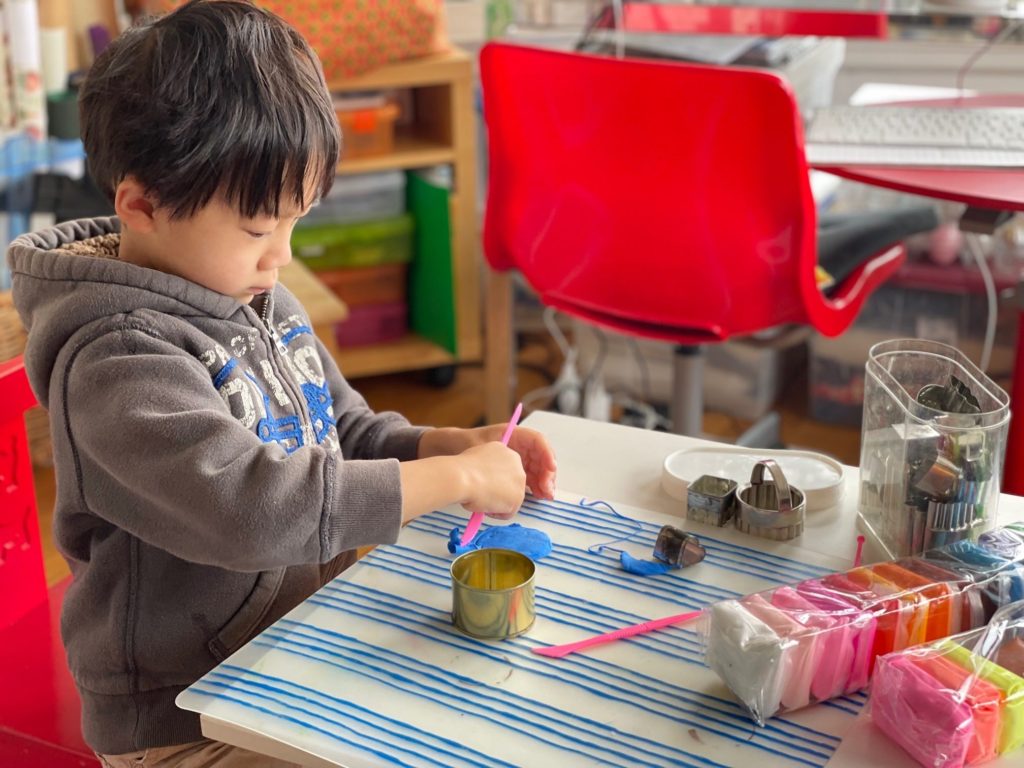
We wanted a variety of cookies: small and large. This ensures we have the right size cookies for each customer’s needs and give us an opportunity to work on pricing. After all, one large chocolate chip cookie can’t cost the same as one little chocolate chip cookie. Even a child knows that!
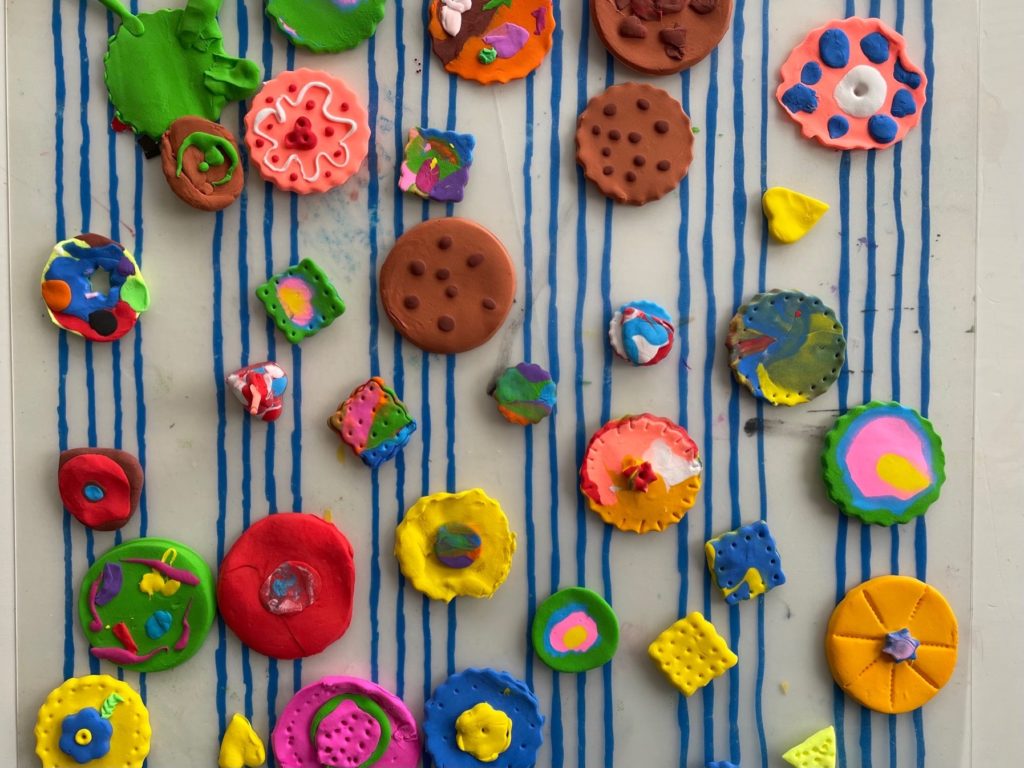
I started the cookie shop idea with Miss T, when she was four. You’ll find the complete, how-to details on her story. Kids already love shopkeeping and pretend play. Just extend the scope of the play to incorporate some life lessons. While mine are mostly business related, you can use this game to teach whatever is important to you, such as interpersonal skills.
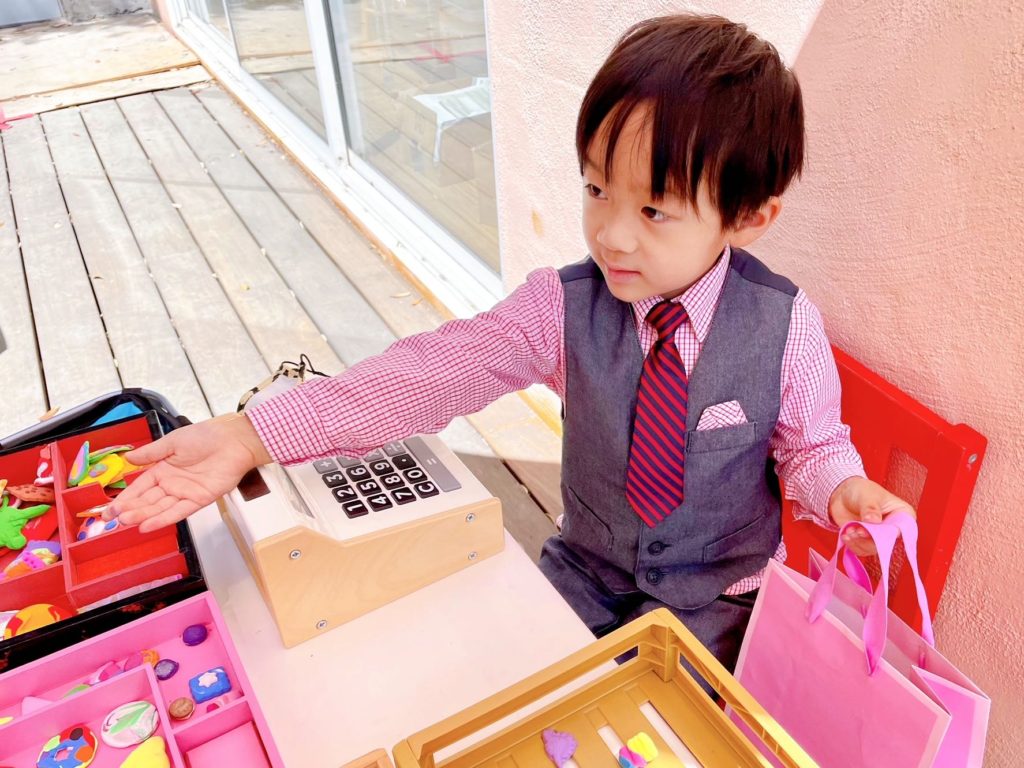
Once we had secured our inventory of cookies, it was time to start our planning and get on with the play.

Basic Considerations for Play
First, our shop needed a name. What to call it? “Sugars and Dips!” said the clever child.
It was such a fun name (probably more suited to an ice cream shop), that I googled it out of curiosity to see if Little N had heard that catchy phrase somewhere before, but it seems to be his original idea.
Next we needed some customers. We chose Saturday to play, when Miss T, grandpa, and Little N’s dad would be able to stop by to purchase a few cookies.
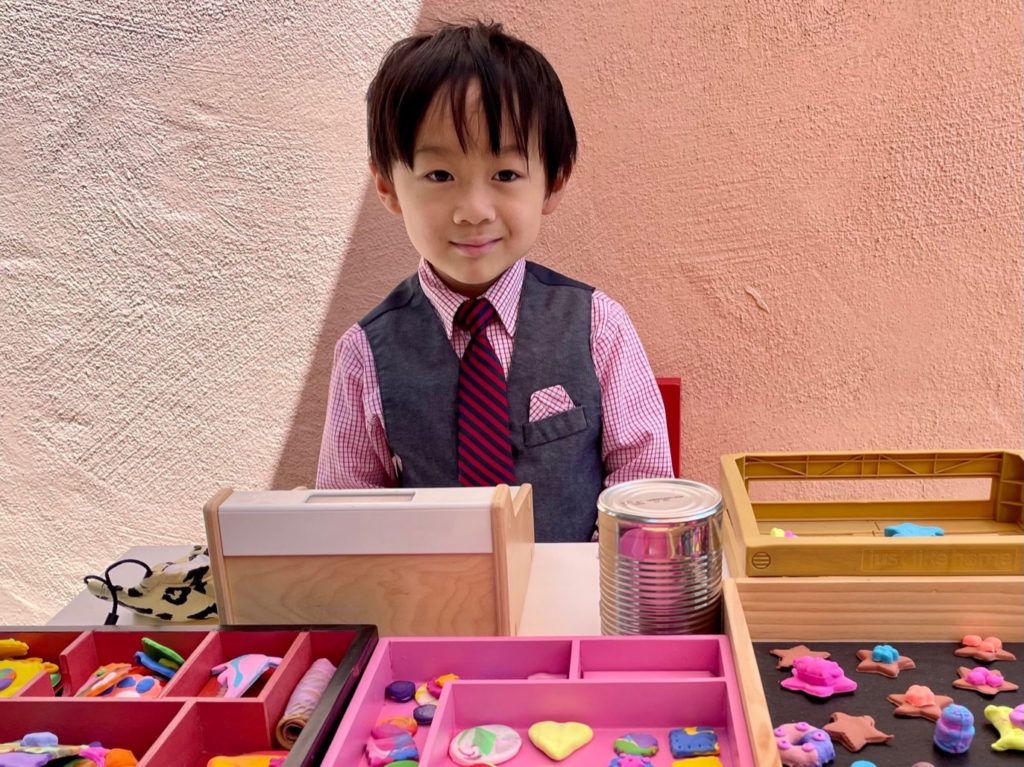
Surprise! Little N arrived at grandma’s wearing a dress shirt, vest, and tie. It was his own idea to look the part of proprietor.
Our store consisted simply of a child’s table and chair, set out on the deck. For cookie display trays, we used empty wooden partition boxes from Melissa and Doug food play sets. We printed and distributed play dollars for the store and the customers. Then, we took turns buying and selling cookies.
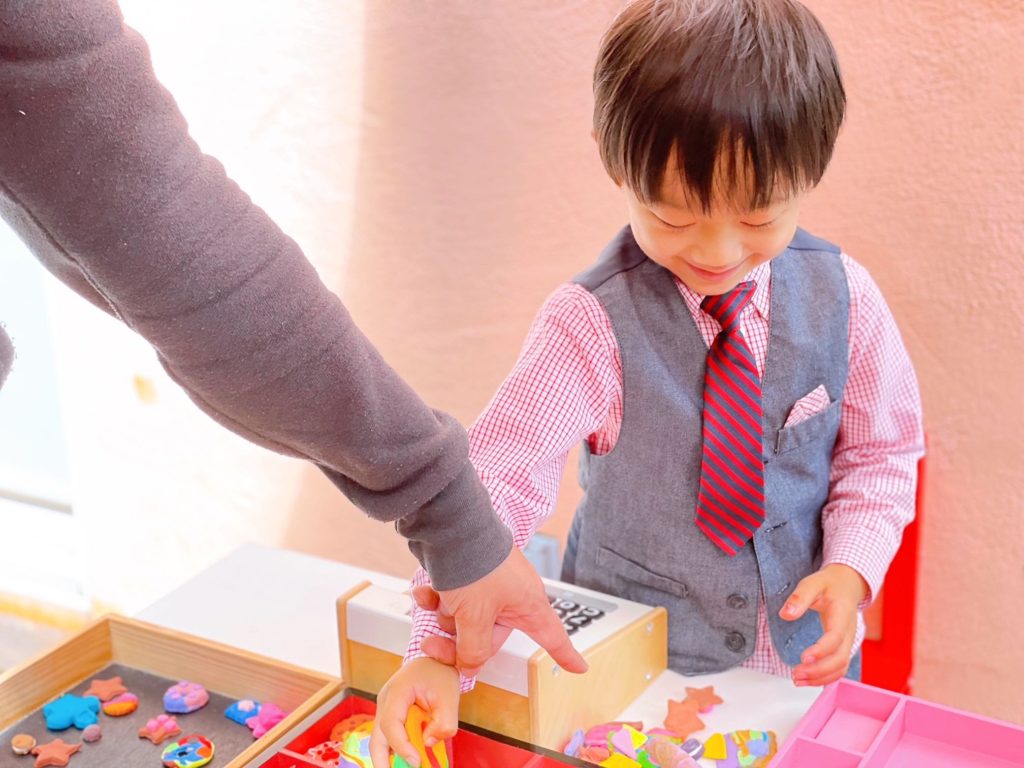
You could stop there.
But here’s where the game can become more than just good fun. Kids can learn about planning and goal setting, to help them tackle any new project.
They can learn about sales and promotion concepts that can be applied to anything from a pretend cookie store, to positioning themselves for college admissions or a new job. They’ll learn to appreciate the value of a good presentation, whether it’s how they display cookies on a tray or how they prepare a school project. And they’ll gain poise and learn how to build relationships with others.
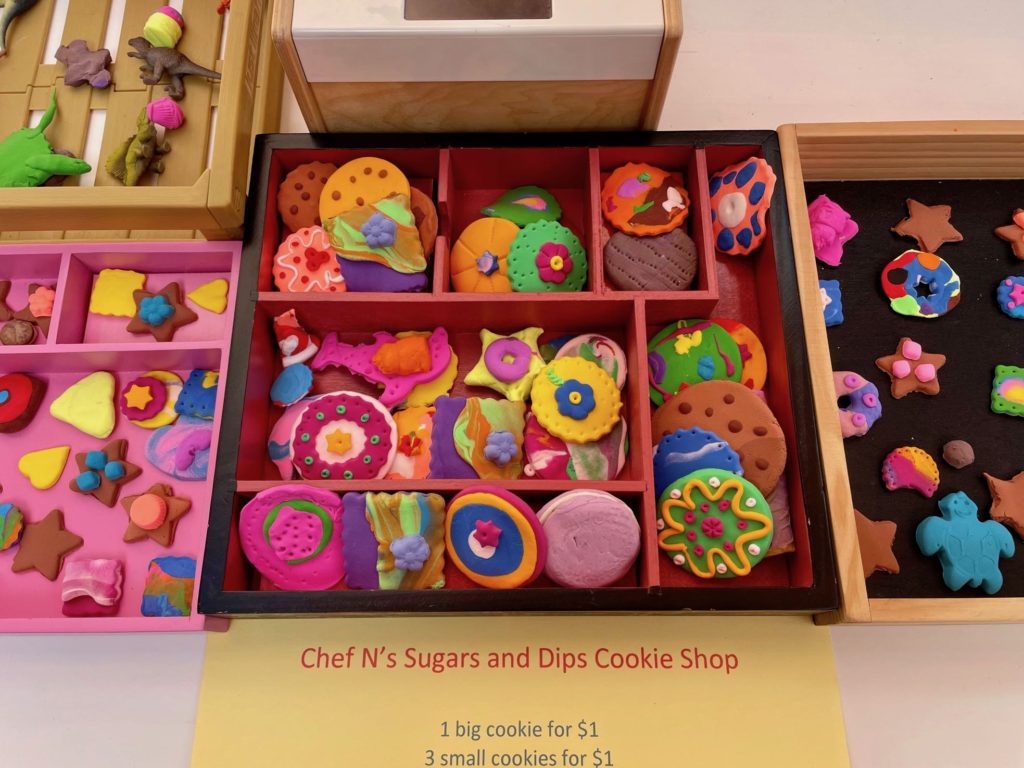
Lesson #1 Planning and Goal-Setting
To start a cookie shop, kids need to plan ahead. How many cookies must we make? What type of cookies are likely to be the most salable? How should we price our products? How many cookies do we want to sell each day?
To keep the math simple, we categorized the cookies into just two sizes: big and small. We sold the big ones at $1 each and the little ones at three for $1.
Lesson #2 Create Visibility
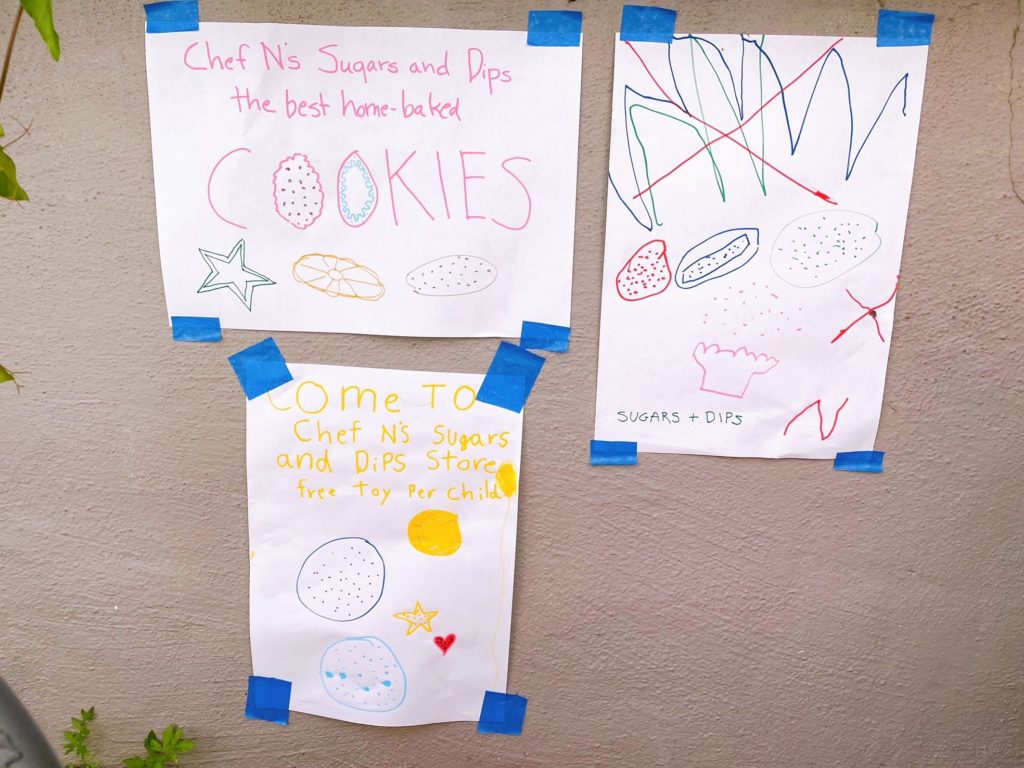
To sell your product, first, people need to be aware your store exists. Discuss with the child ways they learn about new products, such as new toys.
What venues can we use to promote Chef N’s Sugars and Dips Cookie Shop? And what key message should we deliver to customer prospects?
We used two methods of outreach: posters in a high-traffic area, and a TV “ad buy.”
Each of us–Little N, Miss T, and I–made a quick poster with colored markers to tape to the garden wall, and each of us conveyed a different message.
My message was that the cookies are home-baked. Miss T promoted a free toy per child. Little N focused on himself as Chef N–thus, his poster was a pictogram with a chef’s hat and his signature “N,” surrounded by cookies.
When we role played being the customers, we made a point to walk by the posters before going to the shop. At the shop, we would explain how we were motivated to visit because we has seen the posters.
Lesson #3 How to Merchandise
We arranged the cookies attractively, separating the big cookies from the small, so it would be easier for customers to make their selections. It’s important to make your display appealing, to entice customers. We paid attention to colors and shapes to create the best-looking tray presentation.
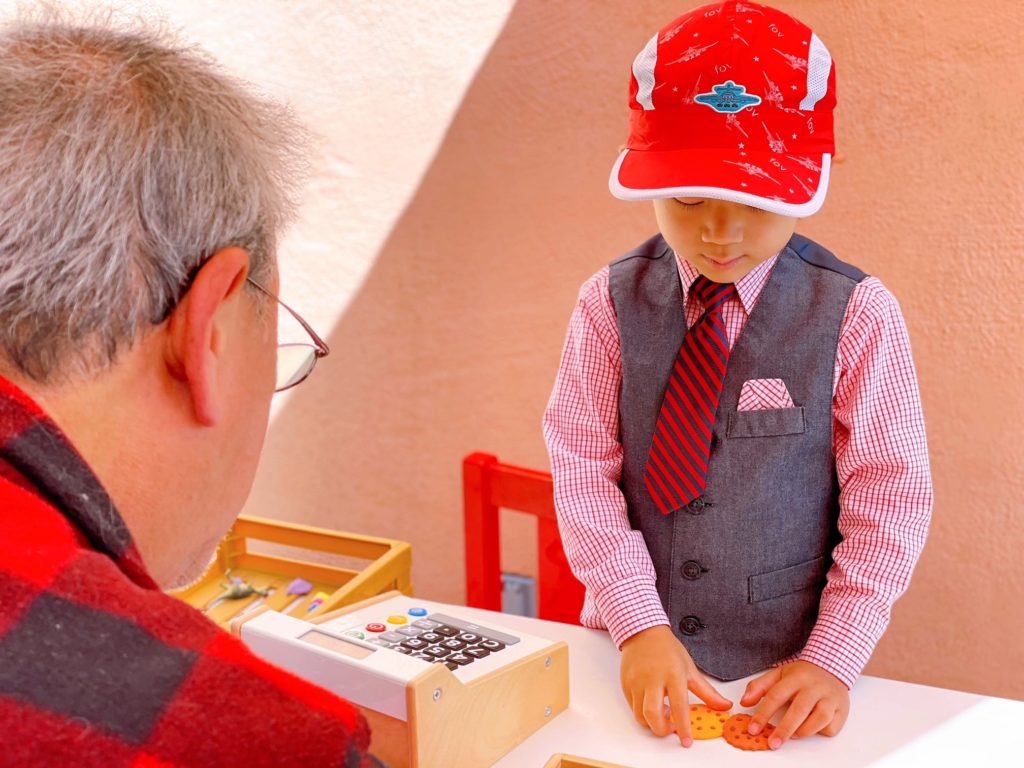
Lesson #4 Respect the Math
When a customer buys some cookies, your child proprietor may want to give an arbitrary price without counting out the purchased cookies and noting their individual prices. Don’t let them.
Remember that buying and selling cookies is also a math game. And in this game, they learn that five $1 bills are the same as one $5 bill. That three small cookies have the same value as one big cookie.
In order to keep the math simple, customers should always buy small cookies in threes. I also only print $1 and $5 bills, to keep the transactions manageable for a five-year-old.
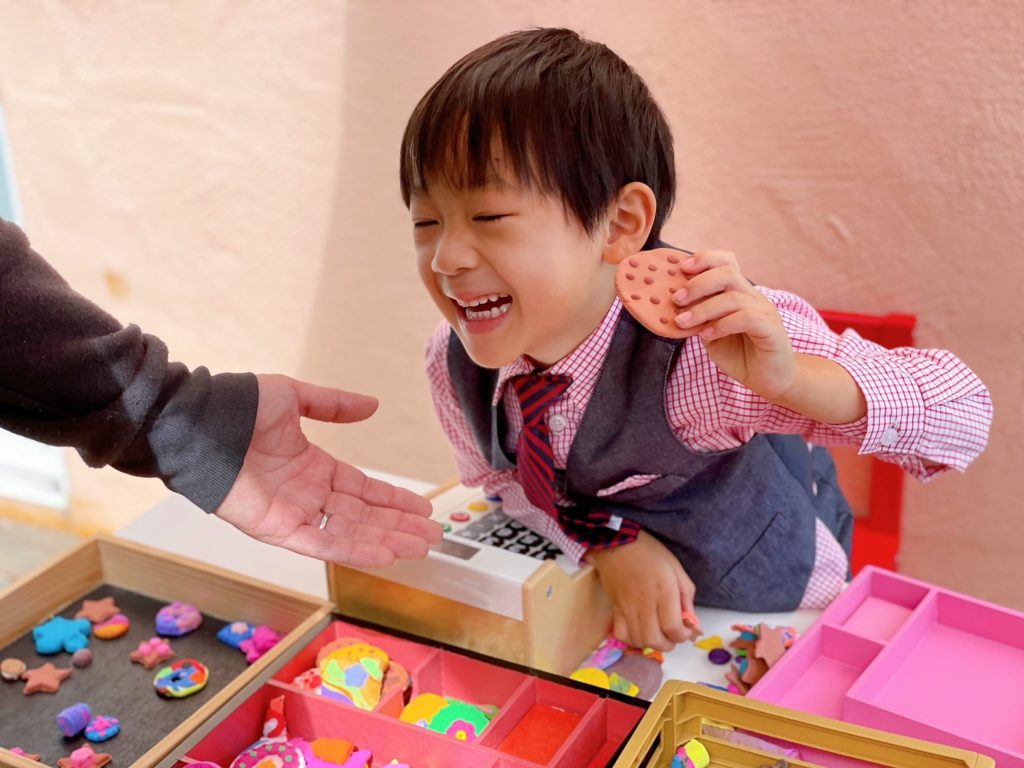
Lesson #5 Learning Poise and Presence
Explain to the child that they should always greet the customers entering the shop. In order to sell the cookies, the child should be able to look the customer in the eye and be able to keep up a conversation, answering questions and promoting the unique qualities and value of the cookies.
We bring “babies” to the shop for more interaction. The child might offer the baby a free cookie or a toy to keep the customer happy.
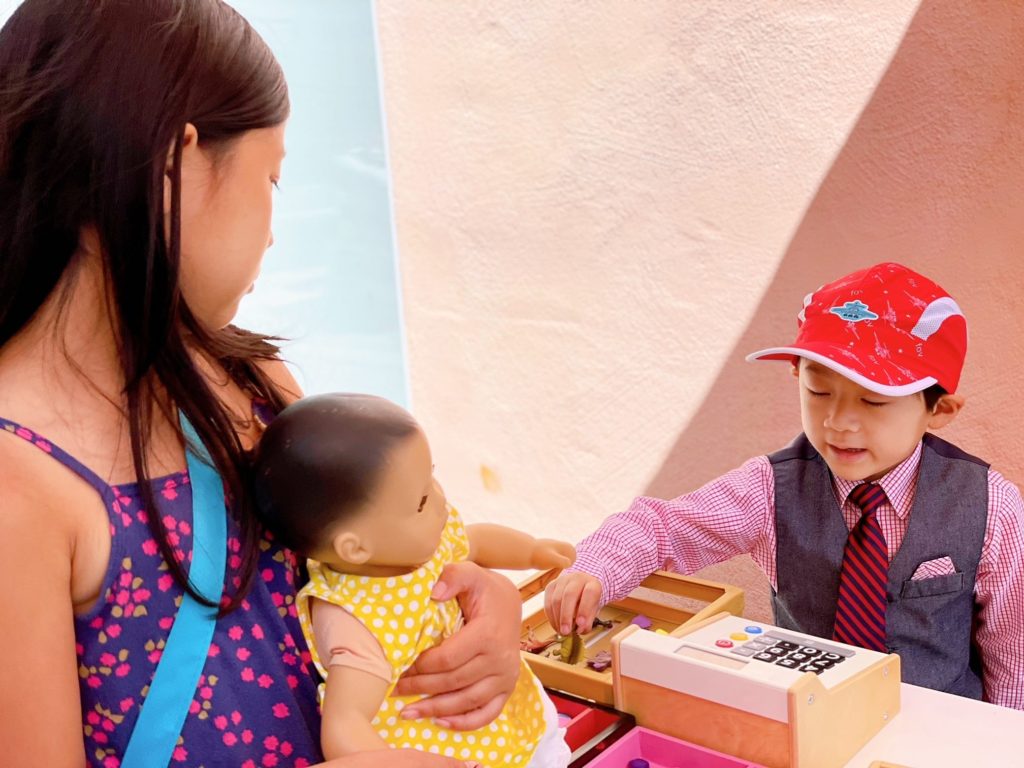
Lesson #6 Building Relationships
The proprietor needs to engage with the customers. When customers come in with their children, the proprietor should be personable and focus some attention on the little ones. When the customer makes a purchase, it’s important to say thank you. And if they leave the store without buying, to say thank you, anyway.
Is there anything the proprietor can do to engender customer loyalty? When Miss T played cookie store, she would always offer a free toy or book to a visiting child. It’s a tactic she learned in real life, when visiting establishments with her parents and being given a small treat from the owners.
Take turns being the proprietor. Miss T is especially accomplished at this role, having played the game since she was four. When it’s my turn, I try to model best practices.
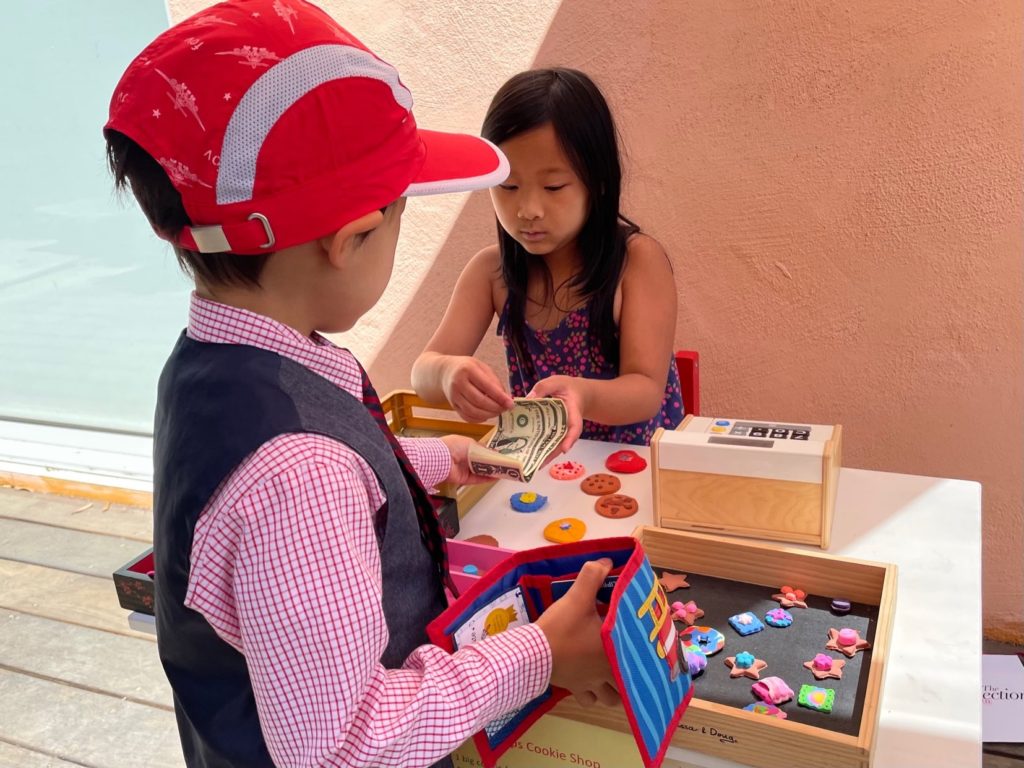
How to Make this Game Better
In order to get the game going quickly, since Little N was eager to play, I videoed the ad after the game was over, when the child was already tired, and therefore, not focused. I thought we could use the video the next time we set up a cookie shop.
Since I wasn’t able to record a smooth commercial spiel, I salvaged what I had by just cobbling a few snippets of video together and added some still shots, type, and music, using my iPhone’s iMovie app. It’s not very polished, but is enough of an example to give Little N an idea of what his ad might look like.
In retrospect, I should have had the kids create the posters and prepare the ad on a separate day, ahead of starting our cookie shop. This would have allowed me more time to coach Little N on messaging, and better explain how these activities are preliminary to our grand opening.
I would have structured it as Part I, preparing the inventory; Part II, preparing the marketing activities; and Part III, running the shop.
Then, I could have brought my iPad out to where we were playing, and like the posters, we could have viewed the ad before going to the shop to buy cookies.
More Game Playing
Little N isn’t going to learn lessons by playing cookie shop just once. It takes playing the game several more times for the lessons to become apparent to the child. I can see the evolution in how eight-year-old Miss T plays the game today, versus her first experiences at four years old, and how polished she has become as both the customer and the proprietor.
News from Camp Grandma
Next week, for our last Camp Grandma session, Miss T and I will make a piñata to star in our end-of-camp summer party. And after that, it will be time to celebrate the achievements of each child at this year’s Camp Grandma.
Don’t forget to sign up for my email newsletter! Every Wednesday, I’ll give you a new idea for an activity or insight to nurture the little ones in your life. Come visit!
.